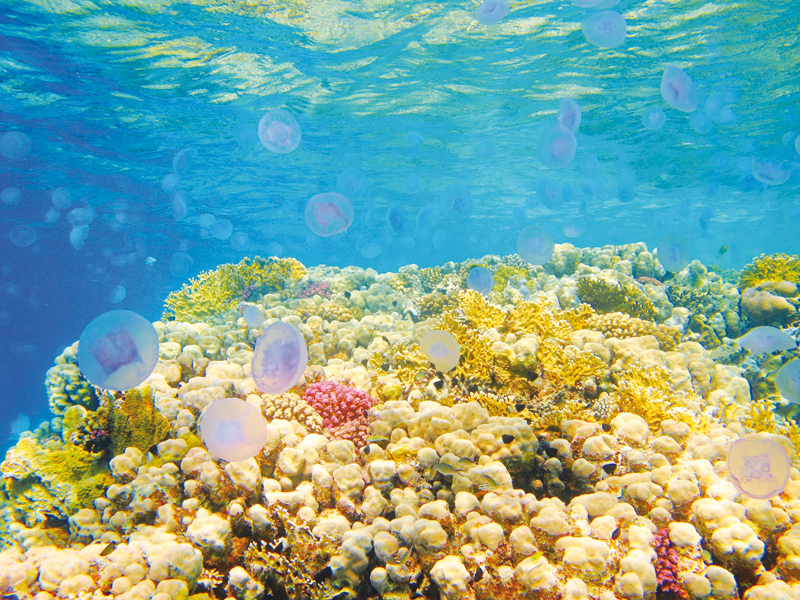

As the temperature rises and the water along Oman’s coastline gets warmer, brainless (literally) little creatures come up close to the shores to keep their offsprings away from predators. Oman’s beaches are a major tourist attraction, attracting people from far and wide to its sandy beaches and turquoise waters but be aware.
Although brainless, jellyfish become abundant during this time of the year. In the water, they look like small translucent packets gliding through the tides but watch out! Their tentacles deliver a stinging blow.

The jellyfish in Oman are not harmful but due to their large numbers, it is better to be careful as their stings can cause severe pain that in young children and those with compromised immune systems might require medical help.
Jellyfish being close to shore is only seasonal and they usually disappear by the onset of the hot summer months starting sometime end may to June.
Injuries caused by jellyfish are rare and there are reports of unaware beachgoers getting stung by these pesky critters, often leaving burn marks and stinging pain.
Recently, a visiting tourist got stung by a jellyfish at Yiti Beach, the injuries were minimal and no real harm was does but the initial sting and the pain that followed was intense. He said, “We noticed little translucent blobs in the water, they weren’t present at first but eventually the whole place was swarmed with what we assume were baby jellyfish. They were harmless so we didn’t take much notice of them and avoided the places they were swarmed, but suddenly we noticed a bigger (adult) jellyfish and before we knew it, I felt a sharp pain, almost electric like followed by swelling and red marks across my elbow and stomach.”
Following the stinging, they made sure to warn the other families on the beach, especially the ones with young kids as to avoid others getting stung.
Another visitor at the beach said, “The bigger jellyfish was still very small, the head smaller than my palm. The tentacles were longer but still overall a smallish jellyfish”. They left the beach soon after but noticed that by 3 pm the clusters of baby jellyfish had disappeared.
These brainless but potent bothers are quite difficult to spot, especially while you’re swimming in the water, and seem to be packing a punch when they do sting. But do not worry, Oman’s beaches are usually safe to swim in even when these pesky visitors take a liking to the warm waters. To keep safe, here are a few things to keep in mind before treading into the waters and what to do in case you get unlucky and cross paths with these slippery stingers. Before treading
on the beach:
Keep an eye out for municipality warnings about jellyfish and avoid the beaches if possible.
Jellyfish will often get washed up on the shore; make sure you don’t touch them and be careful with kids as their inquisitiveness means they are prone to be stung when playing on the shore.
Wear protective clothing to avoid direct contact with the jellyfish when swimming or snorkelling.
If you happen to get stung by a jellyfish, here’s how to deal with the pain:
Rinse the affected area with seawater to ensure no pieces of jellyfish remains on your skin. Remove any pieces of jellyfish tentacle in your skin by rinsing the wound with seawater. You can also try gently scraping off the stingers with the edge of an ID card or a credit card.
Avoid getting sand on it.
Apply vinegar on it for about 30 seconds or make a paste with baking soda and seawater.
Take a hot shower or apply ice packs. Hot water — as hot as you can tolerate but not above 113 F (45 C) — and ice packs may help ease the pain.
Apply lotion to stop the itching.
If the symptoms are too severe, seek medical attention. Jellyfish are often seen on the shores of the Sultanate. However, there are times when there is a large number of them and they are difficult to spot, taking the right precautions and keeping a first aid kit handy in case of a sting will make sure your trip to the beach isn’t completely ruined.
Oman Observer is now on the WhatsApp channel. Click here



